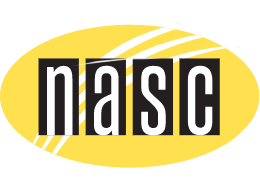Anal Gland Expression in Dogs

Anal glands are a stinky topic that can cause an unpleasant problem for dog owners when they need expressing. Here’s what you need to know about anal glands and anal gland expression in dogs …
What Are Anal Glands?
Your dog’s anal glands are small paired sacs located on either side of the anus. Located at about 5 and 7 o’clock, the anal glands sit just below the skin. When healthy, anal glands are about the size of a kidney bean. The anal glands produce a strong-smelling liquid unique to each dog. When your dog poops, the sacs should express some of the liquid onto the stool. This is likely is a way for dogs to mark their territory. When natural expression doesn't happen, issues like inflammation, impaction, and infection can result.
Anal Gland Smell – What’s Normal and What’s Not?
There’s no way around the fact that anal glands don’t smell nice. They have a pungent odor that’s usually described as a combination of skunk and fish. However, you should only smell this (on occasion) when your dog poops. If you smell this unpleasant aroma more consistently, a few things could be the culprit…
- The anal glands could be too full and may be leaking.
- There could be some fluid left on the fur around the anal area that needs cleaning. This is often the case with fluffy dogs.
- Some dogs release their anal glands when scared or startled.
- The anal glands may have an infection, impaction or an abscess.
Signs of Anal Gland Issues
Here are some signs your dog’s having trouble with his anal glands …
- Scooting his butt on the ground
- Licking or biting his rear end
- Showing pain when sitting or lying in certain positions
Anal Gland Problems in Dogs
Smaller dogs are more likely to struggle with anal gland issues, but larger breeds can have problems too. Dogs who are fed a processed diet or are overweight are at higher risk for anal gland problems.
Healthy anal sac fluid will be brown with a watery consistency. If the fluid isn’t expressed with the stool, and the fluid stays in the sacs long enough, it can begin to thicken. And then it can be difficult for your dog to express his anal glands on his own.
This can lead to several problems:
1.Impaction
When impaction occurs in a dog’s anal glands, there will be hard masses in the sacs. A thick, pasty secretion that cannot be easily expressed will block the glands.
DO NOT express your dog's impacted anal glands at home. If you suspect your dog has an impacted anal gland, work with your holistic vet on a treatment plan. If the remedies below don’t help resolve the impaction, your vet may suggest irrigating the impacted sac with saline to loosen the contents.
2.Infections and Abscesses
Anal gland infections and abscesses can cause severe pain and discoloration. Tunnel-like formations that ooze or bleed can develop from abscessed sacs. and rupture through the skin (1).
3.Anal Gland Tumors
Anal gland tumors, also called anal sac apocrine adenocarcinoma, most often occur in just one sac but can be bilateral in some cases. Warning signs are firm and enlarged anal sacs that won't express even with irrigation. Sometimes vets recommend a biopsy to confirm the diagnosis. Avoid needle aspirate biopsies if you can, as many holistic vets believe needles can stir up cancer cells.
RELATED: A Holistic Approach To Dog Tumors
Avoid Routine Anal Gland Expression in dogs
Anal gland expression in dogs should be done by a veterinarian. It’s not uncommon for anal glands to be damaged by well-meaning owners or groomers ... and even less experienced vets.
Don't express anal glands as part of your pet's regular health or grooming routine. These little sacs are delicate, so repeated squeezing and pinching can cause lasting damage that makes it harder for them to function properly.
Many groomers offer anal gland expression as part of their grooming service. Stress that you don't want this service for your dog. Even some vets will immediately recommend expression if dogs are scooting … or if they’re anesthetizing a dog for another reason. Some pet owners believe that regular anal gland expression is just a part of their job.
You shouldn't need to express your dog's anal glands manually. If he’s struggling to empty them, it is a symptom of an underlying problem. Most often, the diet is incorrect and inflammatory.
RELATED: Home Remedies for Dog Anal Glands
Foods to Help Anal Gland Expression in dogs
Feed a species-appropriate raw food diet.
Diet plays a huge role in anal gland health. The carbohydrates in highly processed kibble are inflammatory and can contribute to anal gland issues.
Inflammation in the body can impact transit time, causing food to pass too quickly through the digestive system. This doesn't allow adequate water absorption to take place. This can lead to loose or watery stools, which won’t put enough pressure on the anal sacs to empty them.
Most anal gland issues are a red flag that your dog's diet isn’t right for him. Switching to a raw food diet with bone content should help firm up your dog’s stool and reduce inflammation. Avoid feeding inflammatory starchy foods like grains, legumes, corn, wheat, potatoes, rice and soy.
Watch for Food Sensitivities
Food sensitivities can cause inflammation and anal gland issues in your dog. If you suspect food allergies or sensitivities, you need to identify what’s causing the problem.
RELATED: 5 Signs of Food Allergies in Dogs
Increase Fiber In The Diet
Fiber can help bulk and firm up your dog's stool which can help them to express their anal glands on their own. Psyllium husk is a great option for this. Just increase the amount you give your dog slowly. Feeding too much can cause constipation.
It is important to feed psyllium husk with the right amount of water. When psyllium interacts with water, it will swell up and then help move waste and toxins through the intestines. The general recommendation is ¼ to 1tsp psyllium husk mixed into 1 cup of water. Slowly increase the amount you give your dog until his stool consistency is firm but not constipated.
Feed Pre- and Probiotics
Pre- and probiotics can help reduce occasional loose stools due to environmental stress or changes in diet and nourish natural gut bacteria. This is especially important if your dog has taken antibiotics for anal gland issues (or for any other reason).
Feed fermented foods or look for a high quality probiotic supplement.
Bonus Tip - Exercise!
Obesity often leads to softer stools which cannot sufficiently express the anal glands. When your dog is overweight or obese, it can put more pressure on his back, impacting the energy and nerve flow to the anal glands. It can also cause a release of inflammatory mediators into the body.
Exercise can stimulate bowel movements and help your dog poop more often. It can also strengthen your dog's rectal and abdominal muscles, which allows him to put more pressure on the anal glands when defecating. Regular exercise should be a regular part of your dog's wellness plan.
References:
1. Gallagher, A. Anal sac disease in dogs and cats - digestive system. Merck Veterinary Manual.




